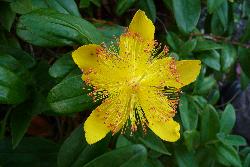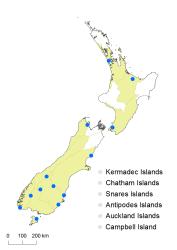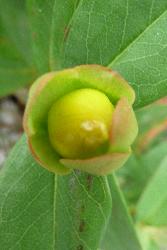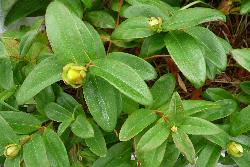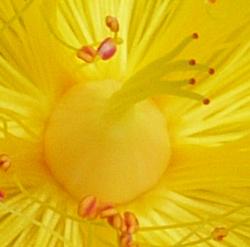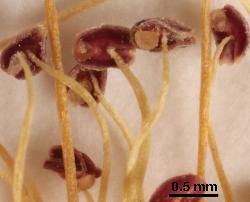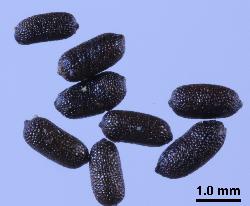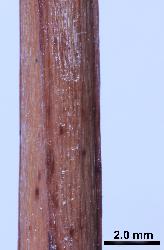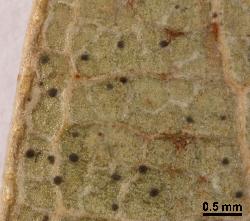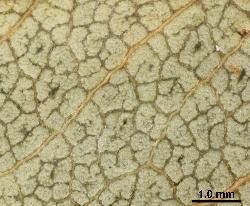- Taxon
- Gallery
Shrub, strongly rhizomatous, up to 0.8 m high. Stems upright, quadrangular, 4-lined, black glands absent. Leaves 30.0–100.0 mm long, 11.0–25.0 mm wide, narrowly ovate, elliptic, ovate-elliptic or ovate-oblong, glabrous, reticulate tertiary veins visible; pellucid glands absent; black glands usually absent or rarely present but in small and scattered groups; apex subacute or obtuse; margin entire; base cuneate, obtuse or rounded; sessile. Inflorescence terminal, cyme, flowers 1–3, corolla 60.0–90.0 mm diam. Pedicels 11.0–16.0 mm long. Bracteoles 7.5–12.5 mm long, 3.6–5.5 mm wide, elliptic or broadly elliptic, apex subacute, obtuse or rounded. Sepals 5, 11.0–21.0 mm long, 9.0–13.0 mm wide, unequal, orbicular or broadly elliptic-oblong; pellucid glands present; black glands absent; apex rounded; margin entire. Petals 30.0–35.0 mm long, 17.0–21.0 mm wide, greater than sepals, obovate, bright yellow, black glands absent, caducous after anthesis. Stamens in 5 bundles, 300–400, 17.0–30.0 mm long, nearly equals petal length; anthers 0.8–1.0 mm long, anther gland orange. Ovary 8.0–8.5 mm long, 6.0–7.0 mm wide, ovoid. Styles 5, 14–16.5 mm long, c. 2 times length ovary. Fruit a capsule, 10.0–20.0 mm long, 7.0–14.0 mm wide, ovoid, brown. Seeds 1.5–2.0 mm long, c. 0.8 mm wide, oblong, terete, brown.
Distinguished by its strongly rhizomatous and low-growing subshrub habit, quadrangular and 4-lined stems, leaves with reticulate tertiary veins visible, large (up to 90 mm diam.) and usually solitary terminal flowers, sepals orbicular, broadly elliptic or broadly elliptic-oblong, 5 styles, stamens almost as long to longer than petals, and the anthers orange-red and with a prominent yellow gland. The leaves usually lack black glands, but very rarely some plants have small groups of black glands scattered over the abaxial surface.
North Island: Auckland, Volcanic Plateau, Southern North Island.
South Island: Western Nelson, Westland, Canterbury, Otago, Southland, Fiordland.
Stewart Island.
Often occurs as a cultivation escape or garden relict, but also known from wasteland, roadside banks, open hillsides, and a gravel beach. It is remarkably tolerant of dry and/or shaded sites.
Allan (1940, p. 287). Voucher: CHR 1195, 1928.
Note: Smith (1904, p. 217) listed H. calycinum as naturalised near Ashburton, and this was the basis of the first published record accepted by Sykes (1982) and Webb et al. (1988). This published record is not substantiated by a voucher and is therefore rejected.
Flowering: Dec.–Feb.



